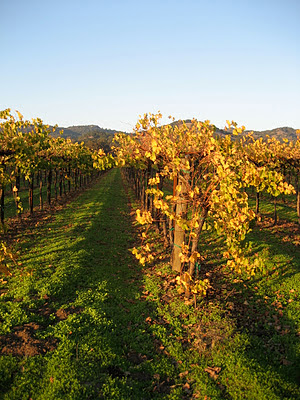A few months ago I commissioned my friend Steve Brummé to recreate (along with some artistic liberty) a vintage French absinthe poster in acrylic on a large canvas. Steve is a highly accomplished artist and teacher. It became a joke between us that my request was akin to asking Michelangelo to paint a cartoon, but Steve took it on as a unique and fun opportunity to recreate a piece of history from the turn of the Century France. He finished the painting this past week and allowed me to finally bring it home.
1. Mixed green salad and micro greens with gala apple vinaigrette
2. Lobster cappuccino. This consists of lobster meat immersed in cream of celeriac soup, topped with a foam made from reduced cream that is steeped with the seared lobster shells and tomato paste then deglazed with brandy, Garnished with truffled mushroom shavings
3. Layers of salmon sashimi, smoked salmon, and blanched apples topped with pea shoots, apple, celery and jalapeño slices with a jalapeño emulsion.
4. Hamachi tartare with wasabi tobiko and a wasabi emulsion
The secret behind putting this elegant lunch together was not any particular cooking skill, rather it relied mostly on organization, a little bit of knife skills, and lots of mis en place done ahead of time. Here is what my prep area looked like right before we kicked off the festivities:
The poster. An advertisement for
"La Poudre Montavon". An anti-alcohol powder that purported to cure alcoholism
An artist's work is such a personal endeavor. As a way to thank Steve, I wanted to do something equally personal, so I invited him to lunch at my house. I Tailored a light 4 course lunch centered around seafood:
Le menu du jour
1. Mixed green salad and micro greens with gala apple vinaigrette
2. Lobster cappuccino. This consists of lobster meat immersed in cream of celeriac soup, topped with a foam made from reduced cream that is steeped with the seared lobster shells and tomato paste then deglazed with brandy, Garnished with truffled mushroom shavings
3. Layers of salmon sashimi, smoked salmon, and blanched apples topped with pea shoots, apple, celery and jalapeño slices with a jalapeño emulsion.
4. Hamachi tartare with wasabi tobiko and a wasabi emulsion
The secret behind putting this elegant lunch together was not any particular cooking skill, rather it relied mostly on organization, a little bit of knife skills, and lots of mis en place done ahead of time. Here is what my prep area looked like right before we kicked off the festivities:
mis en place
Steve in front of his work
Salad with gala apple vinaigrette
Lobster Cappuccino
Salmon Sashimi, Smoked Salmon,
Blanched Apples with
jalapeño emulsion
Hamachi Tartare, Wasabi Topeka,
and Wasabi Emulsion
Thanks Steve!
































































